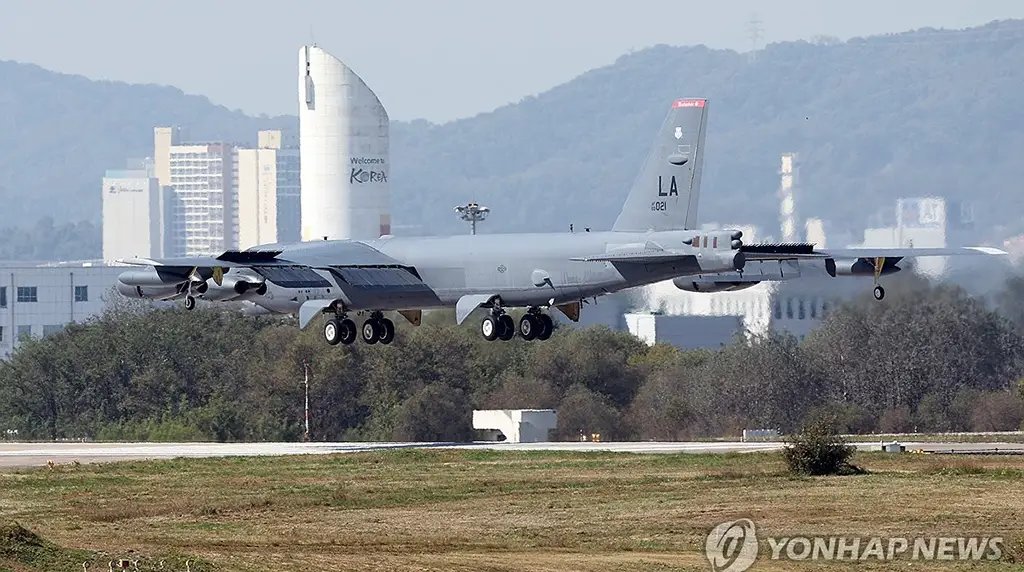[ad_1]

A B-52H landed at Cheongju International Airport, marking the very first time in more than three decades, the iconic bomber landed in South Korea.
A U.S. Air Force B-52H Stratofortress, belonging to the 2nd BW (Bomb Wing) from Barksdale Air Force Base, Louisiana, landed at Cheongju International Airport, 112 kilometers to the southeast of Seoul, on Oct. 17, 2023, marking the first time a Stratofortress strategic bomber landed in South Korea in 35 years.
As pointed out by Edward Pernotto, Col USAFR (Ret.), last time was in 1988, when Barksdale AFB’s 2nd Bomb Wing deployed two B-52s to Osan Air Base South Korea as a deterrent deployment for the 1988 Olympics in Seoul.
Prior to its historic first landing on the Korean Peninsula, the bomber had departed from its homebase along with another BUFF (as the iconic aircraft is nicknamed) using radio callsign HULK 11-12. At a certain point, the formation split (it’s not clear where the other B-52 has landed) and airframe #60-0021/LA flew over the opening of the 6-day Seoul International Aerospace and Defense Exhibition 2023 and also integrated with ROKAF (Republic Of Korea Air Force) F-35A stealth fighters during pre-planned joint drills meant at sending a strong message of deterrence to North Korea.
“U.S. support for Seoul ADEX 23 is at an all-time high in recognition of the 70th anniversary of the ironclad commitment to the ROK-U.S. Alliance,” said an official release published on Oct. 15, 2023. “Participation in the event allows the U.S. to demonstrate its robust readiness by showcasing capabilities committed to protecting service members and their families, as well as defending allies and partner nations.”
“We are honored and excited to demonstrate our ironclad commitment to the ROK-U.S. Alliance with the participation of the B-52 Stratofortress, and all of our US equipment and personnel in Seoul ADEX 23,” said Maj. Rachel Buitrago, 7th Air Force Public Affairs director. “These flyovers, air demonstrations and static displays, including the landing for the B-52 on the peninsula, is part of our continued pledge to promote peace, stability and prosperity on the Korean peninsula.”
Throughout the year, Pyongyang has carried out multiple missile tests, including the launch of its latest Hwasong-18 intercontinental ballistic missile (ICBM) in July. Moreover, North Korea has conducted six underground nuclear tests and there have been concerns since last year that it may be about to conduct another test as part of efforts to develop miniaturised nuclear warheads, Reuters reported.
Interestingly, images published by South Korean Yonhap news agency show that the B-52 that landed at Cheongju is a nuclear-capable bomber.
The USAF B-52 (Callsign HULK) has landed in South Korea for the first time at the Cheongju International Airport. 😎💪
📷 Yonhap News pic.twitter.com/UNiMN0ksSa
— Thenewarea51 (@thenewarea51) October 17, 2023
The U.S. Air Force bomber triad (B-52, B-1 and B-2) have often carried out extended deterrence missions near the Korean Peninsula and also east of North Korea north of the DMZ, launching from Guam, but they rarely landed in South Korea: prior to today’s landing, a B-1B Lancer had landed at Osan Air Base in 2016, about 20 years since the last time.
[ad_2]
Source link
